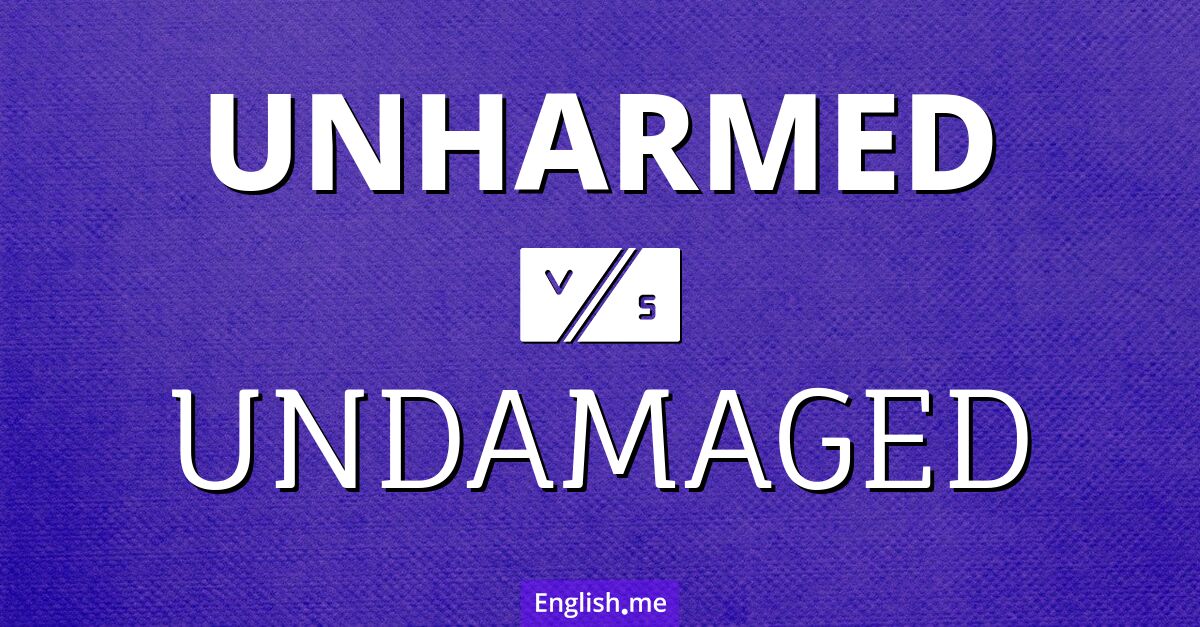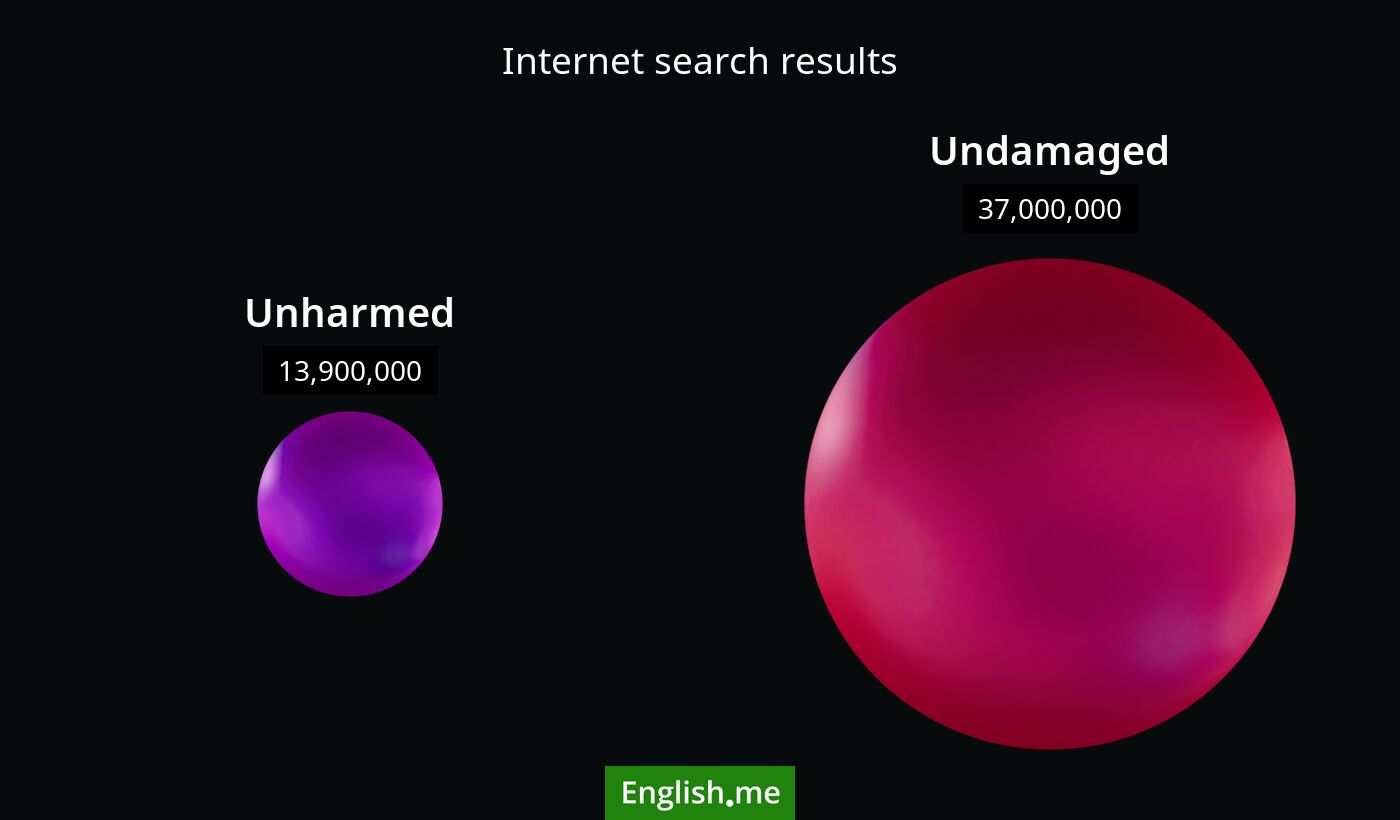Unscathed semantics: exploring "unharmed" vs. "undamaged"
Reviewed and edited by  Lloyd Cooper 18/10/2024, 03:48
Lloyd Cooper 18/10/2024, 03:48
English.me team member

 What is similar?
What is similar?
Both "unharmed" and "undamaged" describe a state of having avoided injury or damage. They are used to convey that something or someone is in the same condition as before a potentially harmful event.
 What is different?
What is different?
"Unharmed" typically refers to living beings and their safety, while "undamaged" is used more broadly for objects and structures. "Unharmed" focuses on the absence of harm or injury, whereas "undamaged" focuses on the absence of physical damage.
 Which one is more common?
Which one is more common?

 Examples of usage
Examples of usage
Unharmed- The child was found unharmed after the accident.
- Despite the rough journey, the explorers arrived unharmed.
- The rescue team ensured that the hikers were unharmed.
- The package arrived at its destination undamaged.
- The storm left the building undamaged.
- The delicate vase was miraculously undamaged after the crash.

 English
English español
español française
française italiano
italiano deutsche
deutsche 日本語
日本語 polski
polski česky
česky svenska
svenska Türkçe
Türkçe Nederlands
Nederlands